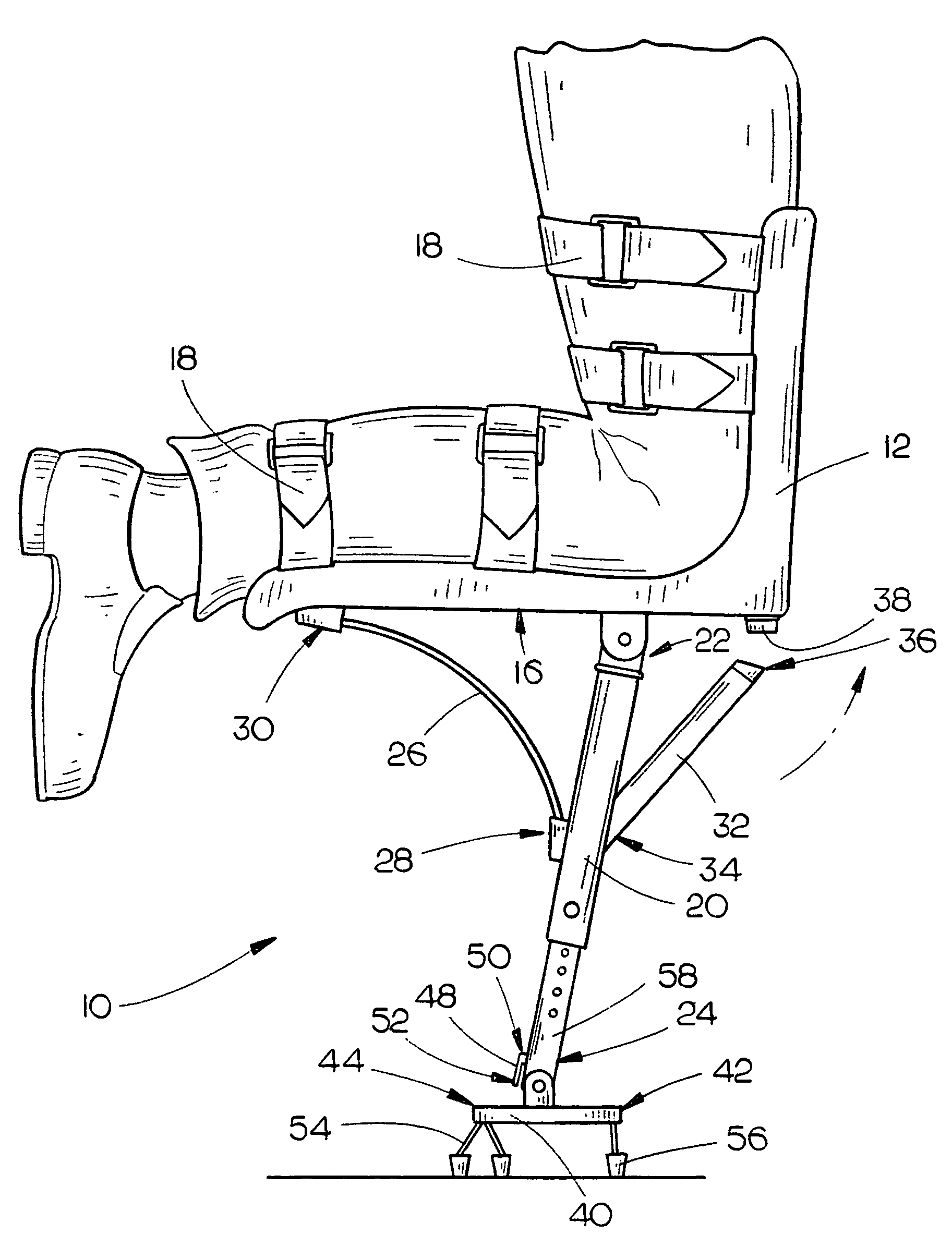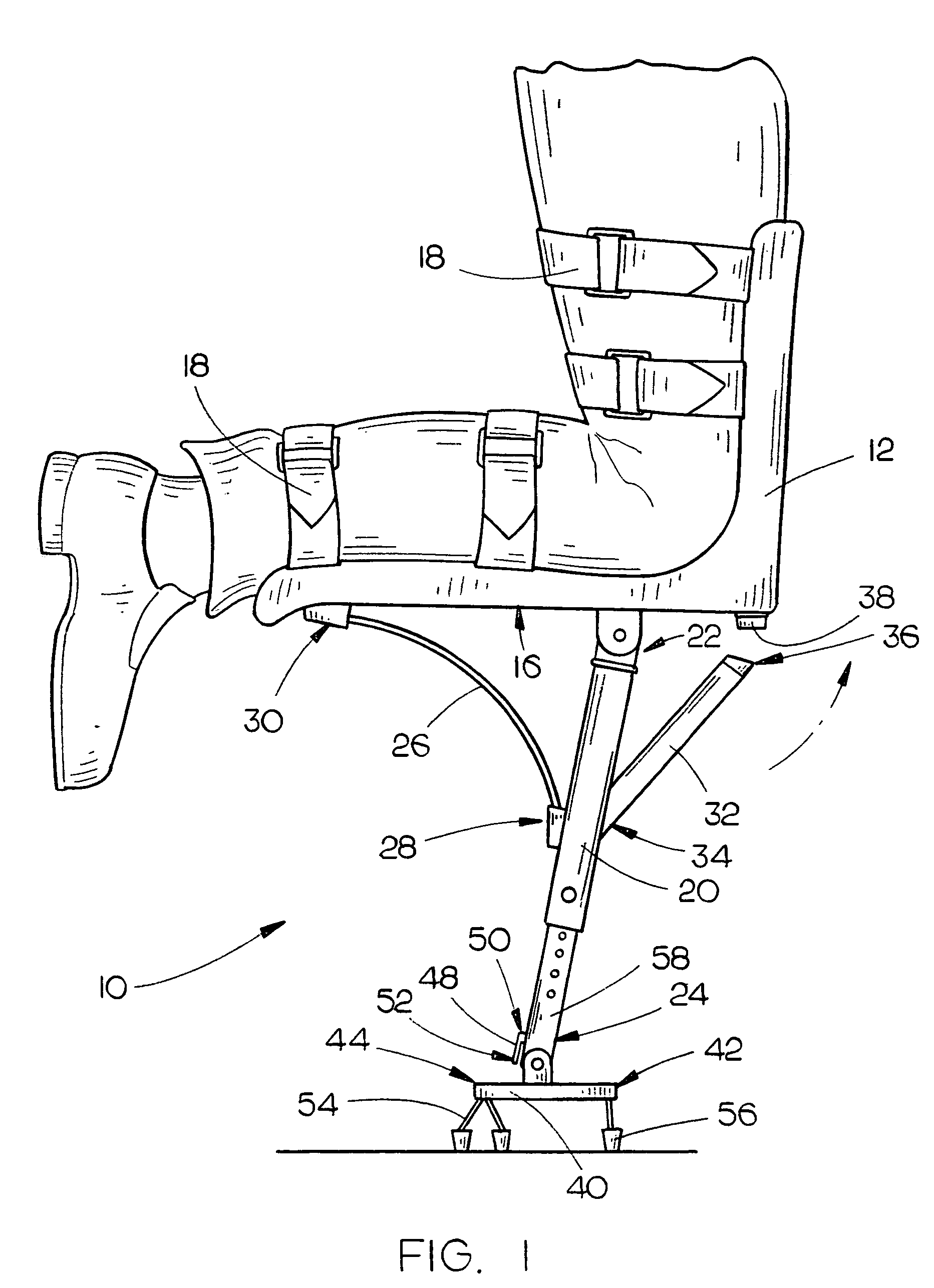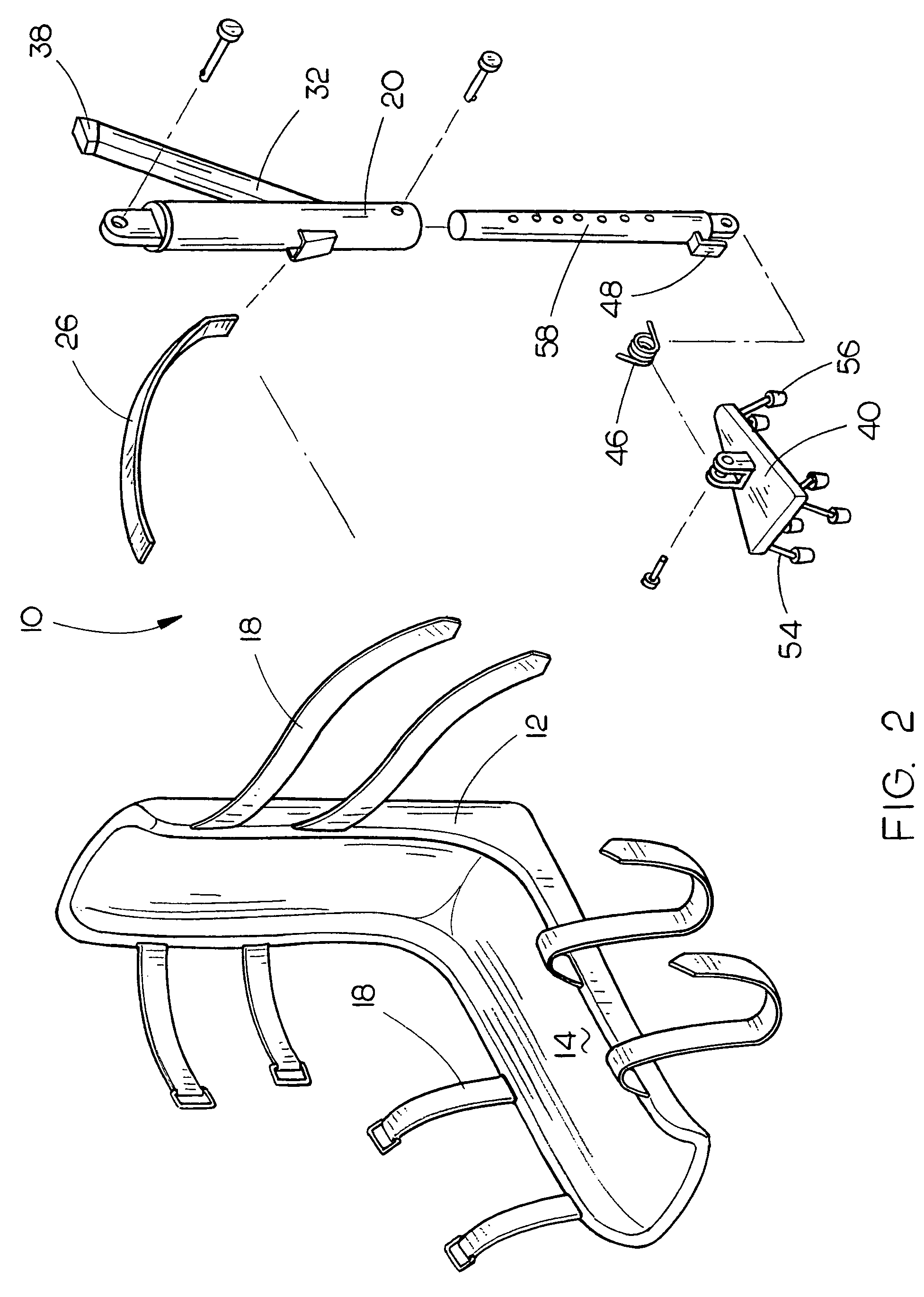Ambulation assistance device
a technology of assistance devices and ambulation, which is applied in the field of ambulation assistance devices, can solve the problems of preventing an individual from easily caring for items from one location to another, becoming quite difficult, and unable to ambulate in a generally natural fashion, and achieves the effect of simple construction and us
- Summary
- Abstract
- Description
- Claims
- Application Information
AI Technical Summary
Benefits of technology
Problems solved by technology
Method used
Image
Examples
Embodiment Construction
[0022]In the following detailed description of exemplary embodiments, reference is made to accompanying FIGS. 1-4, which form a part hereof and show, by way of illustration, exemplary embodiments of the present invention. These embodiments are disclosed in sufficient detail to enable those skilled in the art to practice the invention. It is to be understood that other embodiments may be utilized, however, and other changes may be made without departing from the spirit or scope of the present invention. The following detailed description is, therefore, not to be taken in a limiting sense in that the scope of the present invention is defined only by the appended claims.
[0023]The ambulation assistance device 10 of the present invention is provided with a leg support 12, having an upper surface 14 and a lower surface 16. The upper surface 14 is shaped to releasably engage a forward portion of an individual's knee and at least a forward portion of the individual's lower leg, when the ind...
PUM
 Login to View More
Login to View More Abstract
Description
Claims
Application Information
 Login to View More
Login to View More - R&D
- Intellectual Property
- Life Sciences
- Materials
- Tech Scout
- Unparalleled Data Quality
- Higher Quality Content
- 60% Fewer Hallucinations
Browse by: Latest US Patents, China's latest patents, Technical Efficacy Thesaurus, Application Domain, Technology Topic, Popular Technical Reports.
© 2025 PatSnap. All rights reserved.Legal|Privacy policy|Modern Slavery Act Transparency Statement|Sitemap|About US| Contact US: help@patsnap.com



